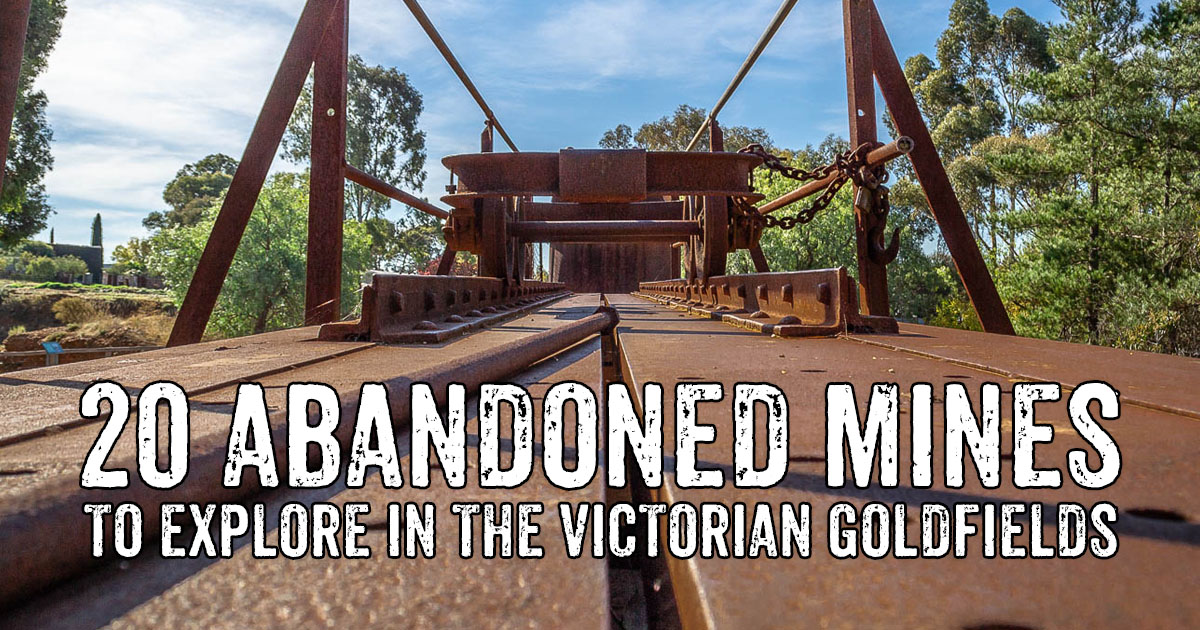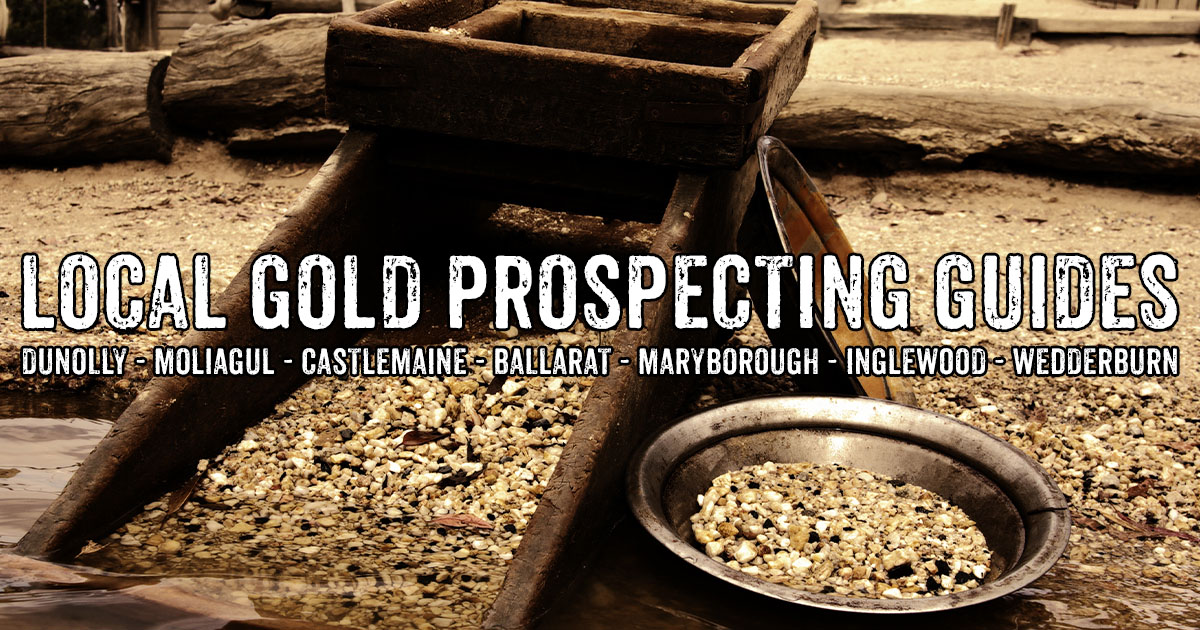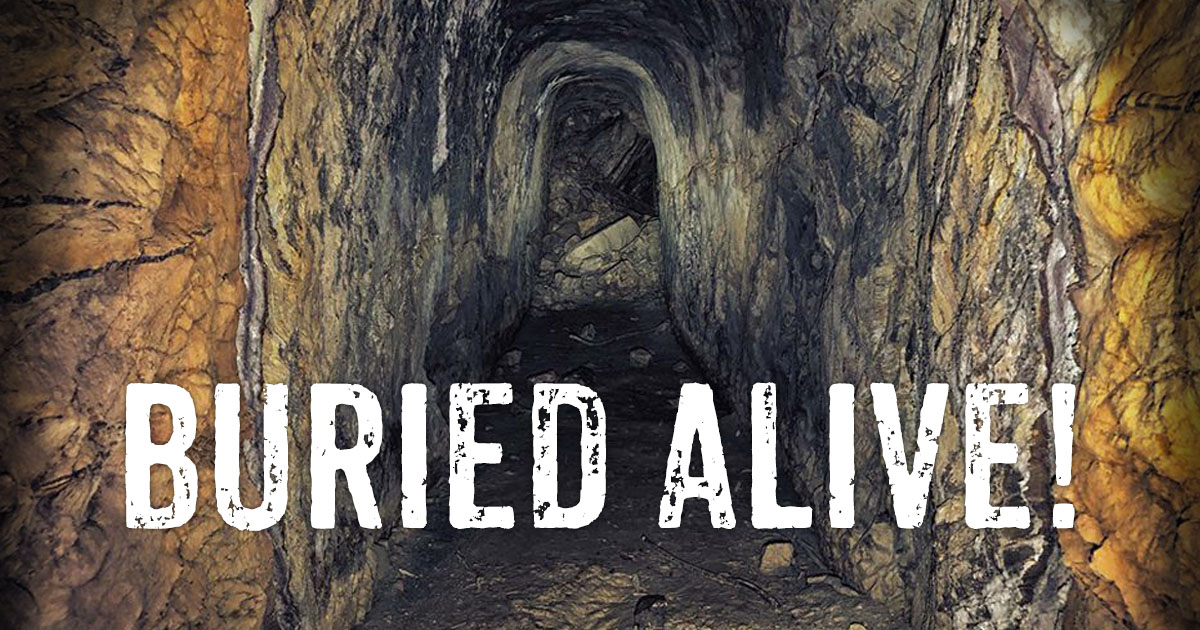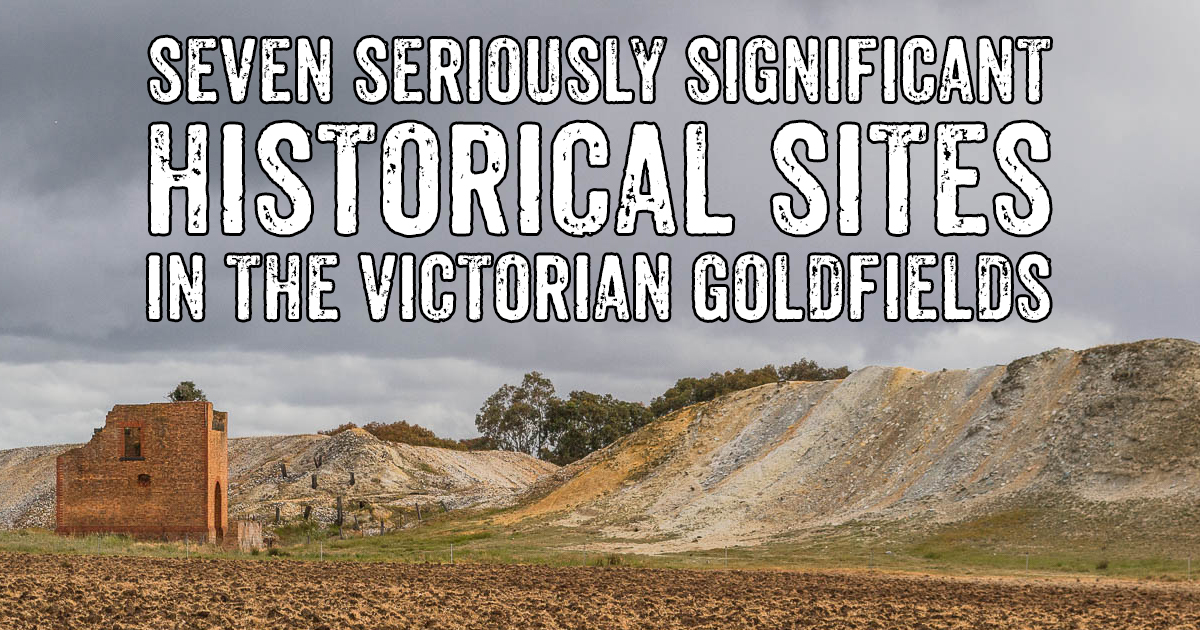
In this article we're going to take a look at one of my favourite historical features left behind from Victoria's busy gold mining era - Stamp Battery foundations.
I got a bit obsessed with stamp batteries over the last few years and I've been to check out a whole heap of them around Western and North Eastern Victoria.
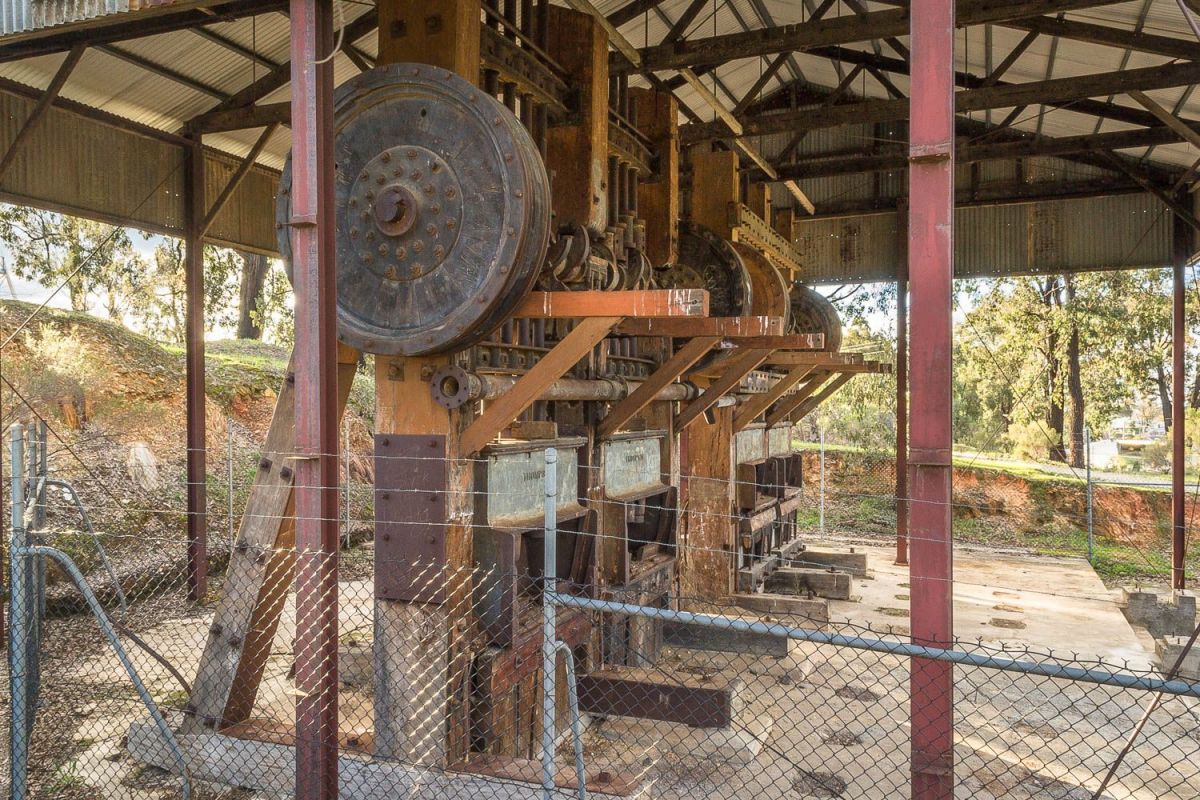
Twenty head stamp battery at Victoria Hill, Bendigo VIC
One thing I've noticed is that although there are a good amount of brilliant surviving stamp battery sites which remain in situ up in Victoria's high country, here in the Victorian Goldfields region, there are not many survivors at all aside from a few which have been preserved within their sheds.
Four out of six of Victoria's surviving State Gold Batteries are located within the Victorian Goldfields, and there are also a number of batteries which have been put up on display.
But abandoned stamp battery sites throughout the bush in this region typically have no remnants of their machinery or framework.
The most you will generally find are remnants of their wooden foundations, and even these are quite rare to come across considering how many of these machines were once in operation throughout the region.
So let's take a closer look at these machines and their foundations.
What is a stamp battery?
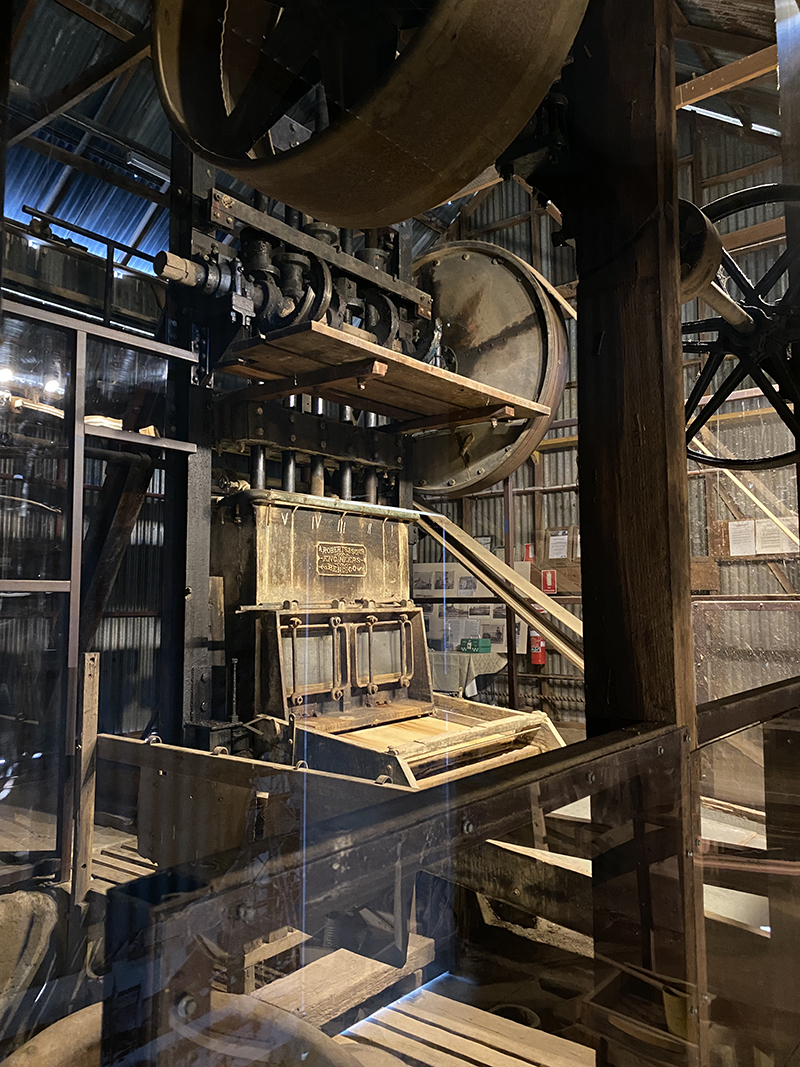
State Gold Battery at Rutherglen, Victoria
Stamp batteries are machines which crush rock using a pounding action. They consist of a set of heavy stamps which are held vertically within a frame. The individual stamps are lifted by cams on a rotating horizontal shaft, then released as the cam rotates out from under them, causing the stamps to fall within the mortar box and crush the rock inside.
This is repeated continually to crush large amounts of gold-bearing rock.
Although stamp batteries were known to be somewhat inefficient, there were many advantages of using these machines for crushing ore.
Stamp batteries were economical, generally well understood machines, simple to keep in order, could be operated almost constantly, and could easily be repaired by ordinary blacksmiths. Stamps could be stopped for repairs a few at a time without halting operations, and wearing parts were simple castings to replace.
Once erected, a stamp battery would last for years.
Stamp batteries were widely used in Victoria during the late nineteenth and early twentieth centuries before being replaced by more efficient crushing methods.
Stamp battery ruins in the Victorian Goldfields
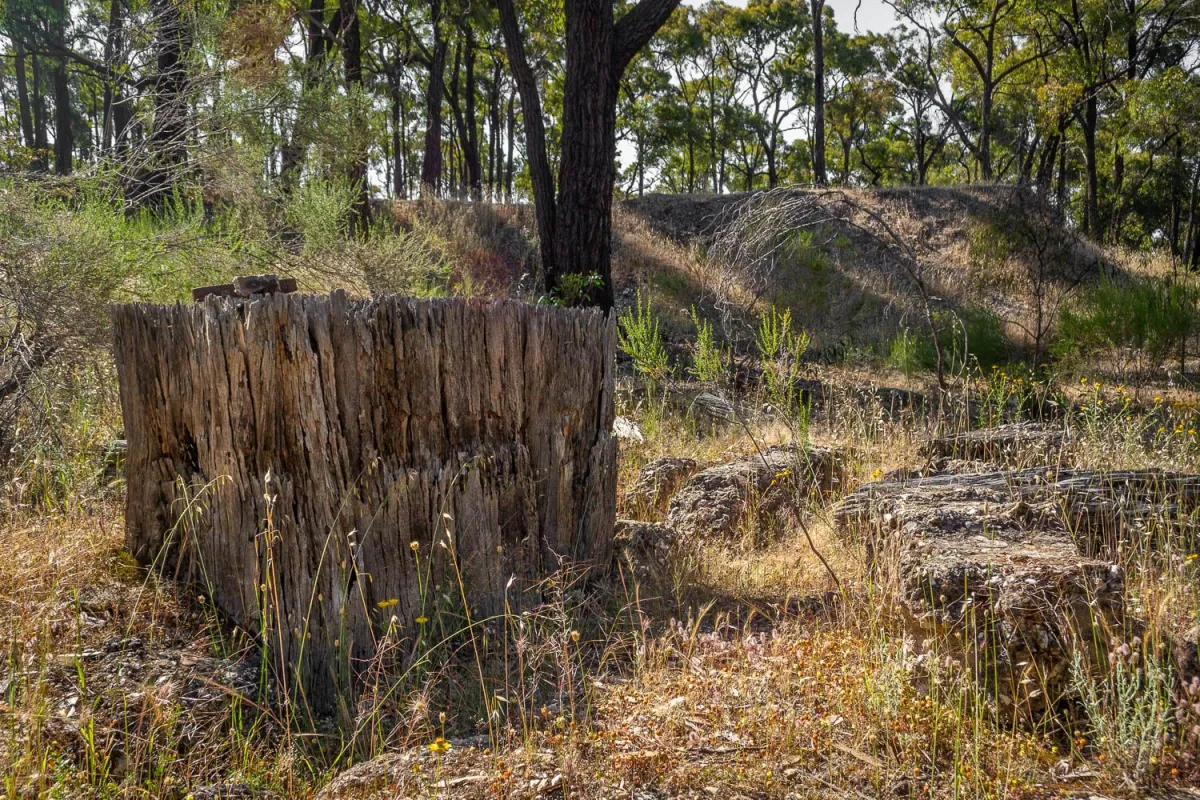
Stamp battery ruins at Belgian Reef, near Dunolly VIC
Although stamp batteries were once commonplace on the goldfields, most of them were abandoned and dismantled long ago.
Many battery sites here consist of nothing more than an indent in the ground where the mortar blocks were once set, and perhaps a loading ramp. And many battery sites were completely flattened, with no trace remaining at all.
But there are some sites which have retained part of their foundations.
So first, let's take a quick look at what battery foundations look like.
Stamp battery foundations

Wooden mortar blocks at the Great Sandstone Mine, Llanelly VIC
This was a great excuse to head over to one of my favourite places, the Ballarat Mechanics Institute Library, to check out the brilliant old ore dressing books they have in their collection, because I know they contain some great illustrations which are perfect for this.

The following diagrams are presented in the 1902 book 'Machinery for Metalliferous Mines'.

Batteries could be set in iron frames, like the twenty head stamp battery shown above. Once the battery ceased operation, this iron framework was typically entirely dismantled and reused, or melted down, as it was too valuable to abandon at the site.
For this reason, you will generally only find remnants of wooden battery foundations out in the bush here today.

This diagram shows us the makeup of wooden battery framework. On this page, we're going to focus on the lower part of the wooden framework, which is typically all that survives of battery sites throughout this region, if anything at all.

The wooden mortar blocks are shown here, which are long blocks of wood set vertically in the ground upon which the mortar box is set. These wooden blocks help to absorb some of the shock of the machine as it operates.
When there is anything remaining of stamp battery foundations out in the bush here, it is usually just the remnants of these wooden mortar blocks. They are sometimes set in concrete, or sometimes just set directly in the ground.

Wooden foundations of the State Battery in Moliagul VIC
There are not too many sites around which still have these, which is not surprising, as they were easily destroyed or deteriorated through fire or general exposure to the weather.
Back to the diagram, we can also see the bottom block beneath the mortar blocks, the mud sills, and the cross sills.
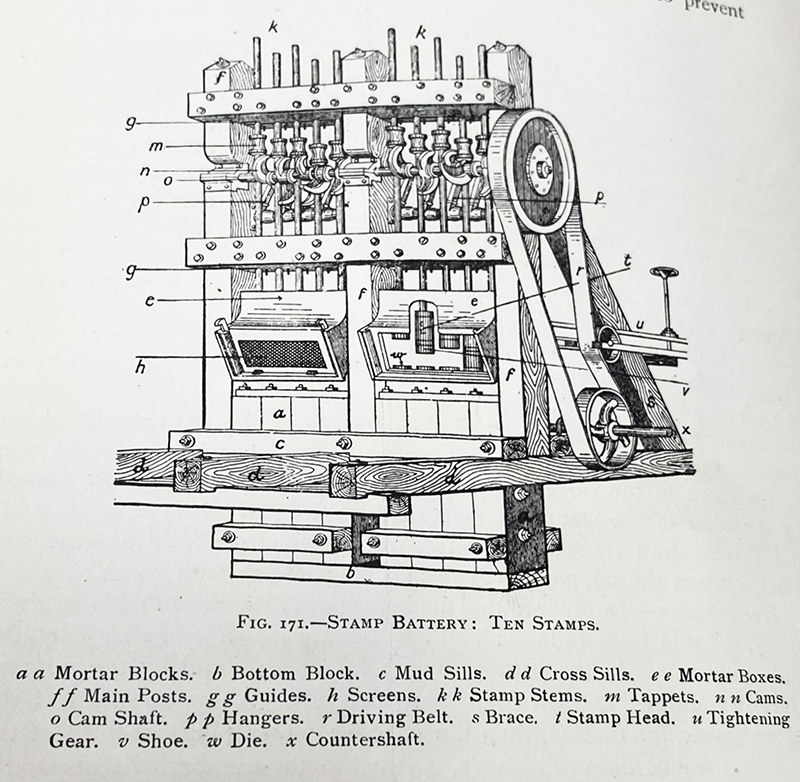
I've only come across two battery sites out in the bush in this region which have remnants of this supporting framework (as in, not just the mortar blocks but the mud and cross sills as well). These were located at Moliagul and Costerfield. If you've seen others, please let me know in the comments! I'd love to go check them out.
What can we learn from Stamp Battery foundations
You can get a rough idea of the size of the battery by looking at the mortar blocks. Each set of blocks supported one mortar box, and these would often be set alongside each other.
You cannot assume the exact size of the battery from the mortar blocks alone, but you will get a rough idea. Each set of mortar blocks supported one mortar box.
Although five heads of stamps per mortar box is typical, they were also made in sets of four or six.

Stamp battery at Taradale VIC
This stamp battery housed within a shed at Taradale has a four head and a five head battery set alongside one another within the same framework.

Stamp battery on display in Blackwood VIC
This battery on display at Blackwood has a set of six stamps. There is another one on display in Heathcote which has two sets of four.
There were also smaller stamp batteries, with one to three stamps, but their foundations and framework would typically be less substantial.
Where can you see stamp battery foundations today?

Wooden stamp battery foundations at the Spring Gully mine near Castlemaine VIC
There are several great places where you can go to take a look at surviving mortar blocks for stamp batteries, including at the Spring Gully Mine near Castlemaine, Belgian Reef near Dunolly, the Great Sandstone Mine at Llanelly, the State Battery at Tarnagulla, and the State Battery at Moliagul.

One of many orb spider webs at the Moliagul State Battery foundations, Moliagul VIC
If you're going to check out the State Battery site at Moliagul, I advise that you go well before dusk as it's currently being guarded by a horde of orb spiders, as I recently found out. The State Battery site out at Tarnagulla is just being guarded by thousands of mosquitos.
One of the coolest sites I've checked out for wooden battery foundations is the Jubilee Historic Area over at Staffordshire Reef, near Ballarat.

This battery site here is very overgrown, but it once boasted a forty head stamp battery! The remnants of the mortar blocks are hiding beneath these ferns, all lined up in a long row.


